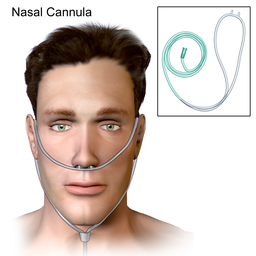Scent
Could Smell Be a Measure of Consciousness?
A recent study shows the clinical value of your nose.
Posted June 9, 2020 Reviewed by Abigail Fagan
Disputes about consciousness, its roots and requirements, are more than philosophical. They are of importance in real-world settings, especially in clinical contexts.
Clinicians routinely face the difficult situation of deciding whether a patient in an unresponsive state after severe brain injury may recover — or at least regain some minimally conscious state. This task is not easy, and the error rate in such cases reaches 40%. Still, immediate treatments, including pain medication, require timely decisions. These decisions often rest on limited data.
The term minimally conscious state (MCS) suggests some form of responsiveness to an induced stimulus, such as sound or verbal commands, touch, light, or other environmental signals. It is important to differentiate MCS from a vegetative state, known as unresponsive wakefulness syndrome (UWS), where no response to any external input is observable. But the border between a minimally conscious and an unresponsive state is blurry. This diagnosis, involving extensive behavioral checklists (like the so-called Coma Recovery Scale Revised or the Coma-Near Coma scale), is not foolproof.
Why not simply "scan" for brain activity? Modern neuroscience advances rapidly with neuroimaging studies about the neural correlates of different states of mind. So, why not place patients into a functional Magnetic Resonance Imaging machine, which measures changes to oxygen levels in blood flow during brain activity? Or do an electroencephalogram, which records brainwaves from the electrical activity of the brain? These are well-established methods.
Those options are not always available. Some patients cannot be moved without risk of further injury. Also, these procedures come with higher costs. They might not be accessible to clinicians, especially in lower-income regions and developing countries. Effective yet economical alternatives to measure the presence of minimal consciousness are needed.
The nose signals consciousness
A recent study by a group of neuroscientists at the Weizmann Institute in Israel offers an uncomplicated, previously overlooked option. Do people avoid sniffing a stinky odor if they have some level of consciousness? Testing the sense of smell of comatose patients might provide clinicians with an additional measure to decide whether a patient is unresponsive or in a state of minimal consciousness.
Can smell be used to measure consciousness in a clinical context?
The idea behind this study sounds surprisingly simple. The researchers gave patients a couple of odors to smell (a pleasant and an unpleasant odor) to measure their sniffing rates in response to these stimuli. Yes, that's basically it. Typically, sniffs become shorter and breathing shallower in response to bad smells. There are certain smells your brain just does not like and instructs your nose to inhale less. This change in sniffing response is involuntary, yet it indicates minimal consciousness in accordance with clinical uses of the term.
Does the same response occur in brain-injured patients?
The study, published in February 2020 in Nature, showed that sniffing rates of otherwise unresponsive patients could help distinguish between people in a vegetative state and those who were minimally conscious. Also, the researchers noted, a promising observation was that all of the patients responsive to odors did recover or at least transitioned into some kind of conscious state later. In addition to its diagnostic use, sniff-tests of unconscious patients therefore also indicate prognostic value.
How was the nose used to probe for minimal consciousness?
The study tested sniffing responses in 43 subjects with severe brain injury. The experimenters used jars with scents of mixtures (shampoo for a pleasant fragrance and rotten fish for an unpleasant one) as well as simple smells (namely, the molecules phenylethyl alcohol with the scent of rose and decanoic acid with the odor of crayons). Why pick those stimuli in particular? The reason is pragmatic. These smells had proven effective in eliciting sniff responses in previous studies. Additionally, the experimental set up in this study included a "blank" jar with no scents – for the purpose of control.

Patients received 10 rounds of jars to smell for 5 seconds. The order of odors was random. The patients' sniff rate was measured with a nasal cannula, converting airflow into voltage.
After such sessions, the level of consciousness in patients was documented. To observe longitudinal developments, sniff-tests were repeated 1 to 12 times per patient (within 1 to 10 weeks).
What do sniff responses tell us about consciousness?
In effect, the researchers tested two things. On the one hand, they investigated odorant detection, meaning whether the patient's sniff rate changed when any odor was present. That's where the blank jars came into play — to check whether the sniffing was in response to a given smell and not something else. On the other hand, the researchers tested odorant discrimination. Here, the question was whether the patients' sniffs revealed any differentiation in response to a pleasant or unpleasant smell.
Specifically, were sniffs getting shallower in response to a bad smell? Indeed, they were. The scientist could determine two things: first, whether patients responded to any given odor and, second, whether these patients reacted to two different smells differently. (The notable change in sniff volume rate, determining a change in odor response, was fixed at 15% for odor detection and 20% for odor discrimination.)
Such sensory-driven sniff responses to smells were observed in patients in a minimally conscious state (MCS). In comparison, such sniff-driven behavior was generally not found in vegetative patients with unresponsive wakefulness syndrome (UWS). Notably, 10 patients with UWS did show some level of sniff response. These patients later all transitioned to MCS.
How foolproof is this test?
The test is not without a degree of uncertainty. An absence of response to odors is not a criterion to dismiss the possibility that a patient is minimally conscious. Some people cannot smell but suffer from anosmia, the inability to smell. Anosmia can have various causes. It can be congenital, meaning present from birth. Alternatively, anosmia might be a consequence of the brain injury from which a patient suffers if it targets neuroanatomy of the olfactory system. Such damages to the olfactory system can be transitory or permanent.
Another interesting factor about anosmia is that it also can be partial and odor selective. Some people can smell, they just cannot detect specific odorants. An extension of sample odors, pleasant and unpleasant, could be relevant for extending the sniff-test for clinical application.
What marks the link between smell and consciousness?

The link between smell and consciousness is not novel. Historically, smelling salt capsules were part of first-aid kits and administered to revive fainting or unconscious people. These capsules contained alcohol and ammonia (in small amounts, as this substance is toxic in higher concentrations). Some paintings, including Rembrandt's Unconscious Patient (Allegory of Smell), depict their widespread application. Traditionally, smelling salts quickly became associated with the image of fainting women. Today, professional sportspeople, including boxers and footballers, continue to use them as stimulants, despite medical objections.
The 2020 sniff-test differs from such medical predecessors. It does not use stinks explicitly as irritants (which involves somatosensory stimulation or the trigeminal nerve in pain sensations). Instead, it tests for an involuntary motor response to a purely olfactory stimulus.
Why should sniff responses to odors count as a sign of consciousness? The key is that the researchers were testing pure fragrances, meaning odorants that target an olfactory and not a pain or somatosensory response. This might tell us something about the minimally cognitive basis of perceptual judgment, since the tested odorants were not intrinsically harmful or irritants but considered unpleasant by most people (rotten fish is a delicacy in some cuisines, such as Surströmming in Sweden).
The adverse sniffing response here was not directly connected to a feature in the chemical structure of the stimulus per se. Instead, it might be better seen as value judgment by the brain, which had to minimally process and evaluate the given stimulus as pleasant or unpleasant. In other words, the basic perceptual judgment that underlies the observed sniffing rates in minimally conscious patients is closer to processes of minimal cognition than mere physiological reflex.
In the end, such experimental forays into the coupling of smell and minimal consciousness cast a brighter spotlight on the neurological mechanisms that underpin the roots of certain mental states, especially of conscious states without awareness. Will that settle debate about consciousness among philosophers? Probably not. But it might help save lives and further our understanding of the mind along the way.
References
Arzi, Anat, Liron Rozenkrantz, Lior Gorodisky, Danit Rozenkrantz, Yael Holtzman, Aharon Ravia, Tristan A. Bekinschtein et al. "Olfactory sniffing signals consciousness in unresponsive patients with brain injuries." Nature 581, no. 7809 (2020): 428-433.




